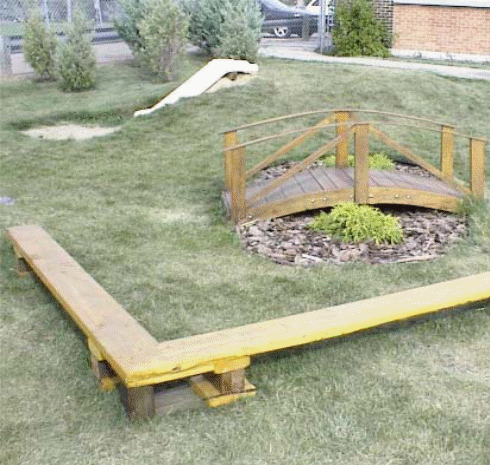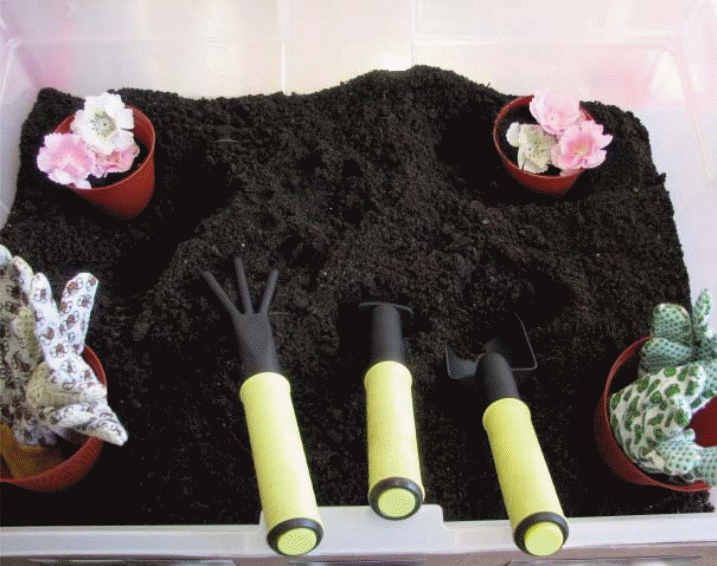Children’s playing environments are crucial in helping them to improve their physical strength as well as their intellectual growth. The design of the playing environment is crucial in helping children to learn positive outdoor activities that can help to grow better.
The time that children spend playing outdoors can be made more valuable for their learning about nature and its benefits. There are several features and experiences that make children explore their environments, and the benefits associated with this are many.
An appropriate outdoor learning environment for children is supposed to take care of their intellectual and physical abilities, which is the main role it is designed for.
A good outdoor environment should have adequate space and objects to play with to enable each individual child to learn and exercise freely.
The child gets an opportunity to internalize positive aspects of the environment in which he is in and this is necessary for his or her growth and development (Saskatchewan Ministry of Education 7).
The outdoor playing environment must be designed in a way that enhances visual appeal to the children playing in it to make their playing experience enjoyable.
An effective design of an outdoor playing environment should allow children to express themselves physically as this enhances practical learning.
The environment must be dynamic to ensure that children are able to explore and act on their instincts as they interact with the objects that are within their surroundings.
The independence of every child can be encouraged within such a setting because by means of this trait they are able to act on their curiosity to learn new ideas brought about by the outdoor activities they take part in.
Children are able to grow their physical and mental capacities within environments where their creativity is allowed to blossom (Saskatchewan Ministry of Education 12).

Figure 1. Objects in an outdoor learning and playing environment. Source: Saskatchewan Ministry of Education
The outdoor learning environment should be able to encourage stimulating activities, which can excite as well as encourage children to express their inner passions without difficulty.
The design of such an environment can consider the use of materials that are naturally appealing, which stimulate children to feel at ease and relaxed when in an outdoor setup.
These materials should have colors, sounds, textures and smells that are naturally attractive to the children and which stimulate their inner instincts (Saskatchewan Ministry of Education 15).
The outdoor experiences of children within such environments can become livelier and exciting. The materials and objects that are used to design the outdoor spaces must be presented in a manner that allows for easy exploration by the children.

Figure 2. Objects arranged in a natural environment which invite children to play. Source: Saskatchewan Ministry of Education.
The features that are to be used as part of a space design facilitate the movement of the users, which gives them an easier time while playing. These features can be arranged in a manner that includes the perspective of the children in the design and explains how the objects should be used.
The spaces can cater for the children’s level of movement and should also have features that support disabled children to make maximum use of that environment.
The children can be involved in some aspects of the design to ensure that the final playing environment is responsive to their needs and wishes (Malone and Tranter 287).
This makes the children fascinated and it nurtures a sense of curiosity in them as they try to understand how the natural environment works.
Outdoor space designs should have the ability to encourage participation, cooperation and interaction between the different sets of children that use them.
Children can take advantage of the recreational benefits that exist as well as the activities that are carried out within it, which can offer excitement and evoke curiosity in them.
An outdoor environment needs to have spaces where children and their teachers or guardians can mingle (Malone and Tranter 291). Selective isolated spaces should be included in the design to cater for those children who like to play together in small groups.
Such spaces encourage the children to foster strong relationships based on the interactions they have with their peers.
The outdoor space that is used for learning must incorporate a couple of natural features to enhance the learning approaches that are used in school. These natural features can include water ponds, trees, bushes and hills.
The design should consider how children can utilize these features in a safe manner without being exposed to any hazards (White and Stoecklin 3).
The outdoor learning environment can be established within a habitat for birds, animals and other natural species, which the children can interact with to expand their knowledge.
It is important to ensure that the learning approach that is adopted within these habitats does not expose the children or the species that exist in that area to danger.
The participatory learning approach is important for learners within such environments as it is the best way through which they can learn and interact with their surroundings.
The learning approach is unstructured and informal and it is mainly centered on the child’s own intuition regarding what he or she witnesses from the natural environment.
The design that is adopted needs to allow for private and tranquil spaces where children can think, plan and focus on different types of activities (White and Stoecklin 6).
The spaces must be able to allow children to display their talents and projects in a manner that encourages criticism from their peers and their guardians or teachers.
This enables children to improve their approach to life’s challenges and expectations when they are interacting with their peers or with other members of the society.
The atmosphere in which the outdoor learning activity occurs determines the way the children explore their surroundings.
Children are attracted by unique smells, textures, colors and sounds that exist within a specific environment; these attributes are proven to arouse their interest a lot.
These aspects of the environment help to focus the attention of children toward new experiences that they can encounter within a particular space.
School grounds must have materials and equipment that attract children to play and react to their intuitions while exploring their surroundings (Stine 153).
The materials used need to have different sounds, aromas, colors, and textures, to stimulate the intuitive aspects of learning in children. The children’s intellectual growth can be adapted to the natural environment easily because they interact with the objects without much limitation.
The practice of allowing children to learn through active participation in an outdoor environment offers them the ability to develop mentally and physically.
Children are able to discover new ideas and concepts within the environment that they are exposed to, which provides a good way to track their progress. This form of learning is applied to children as it encourages the use of active practical methods, which go well with them.
Active participation of children within their surroundings improves their problem solving skills and enables them to be more imaginative in nature (Stine 157).
The objects and the features that exist within the natural environment provide the children with the necessary confidence to take on challenging tasks that can boost their development.
The involvement of children in the planning of the outdoors spaces in which learning takes place makes them more connected to it. This makes the children understand how the different objects, features and equipment within that space work and the value they add to the learning process.
Objects such as gardens, trees and bushes can support the children’s cognitive abilities while lawns, sports facilities and swings can enhance the physical development of children (Danks 107).
The objects used within an outdoor learning environment must be able to expand the children’s playing and exploration options to ensure that they explore a variety of activities.
Children prefer outdoor settings, which are more complex, challenging and suited to their expectations such as what they seek to achieve out of these activities.
A good and inviting natural environment encourages children to act spontaneously and to have a connection with their ecological surroundings. Children are able to have a connection with the natural world.
Outdoor spaces with diverse features, landscapes and objects increase the level and variety of play and learning experiences for children (Danks 117).
This enhances social interaction and fosters positive behavioral development among the children who are exposed to such environments. Consequently, a suitable environment should consist of elements and features that complement the child’s growth and development needs.
Works Cited
Danks, Sharon Gamson. Asphalt to Ecosystems: Design Ideas for Schoolyard Transformation. Oakland, CA: New Village Press, 2010. Print.
Malone, Karen and Paul J. Tranter. “School as Sites for Learning: Making the Most of Environmental Opportunities.” Environmental Education Research 9.3 (2003): 283-303.Print.
Saskatchewan Ministry of Education. Creating Early Learning Environments. Saskatchewan Ministry of Education, 2008. Print.
Stine, Sharon. Landscapes for Learning: Creating Outdoor Environments for Children and Youth. Hoboken, NJ: Wiley, 1997. Print.
White, Randy and Vicki Stoecklin. “Children Outdoor play & Learning Environment: Returning to Nature.” Childhood News Magazine 1998: 1-8. Print.